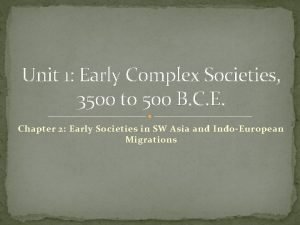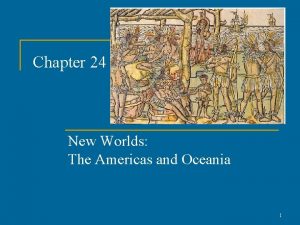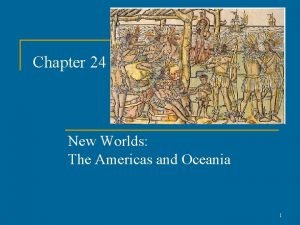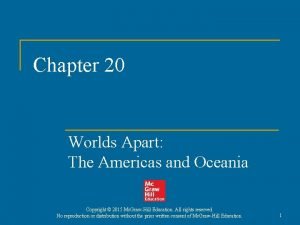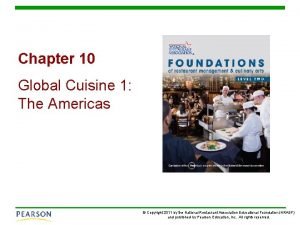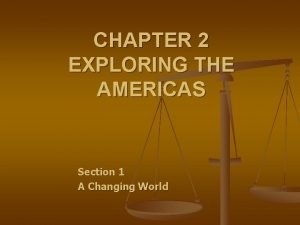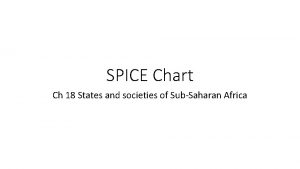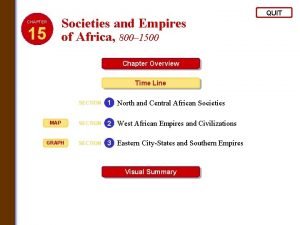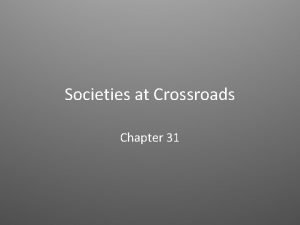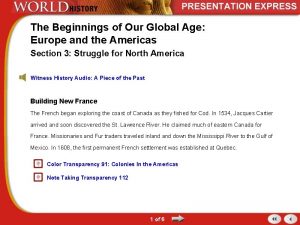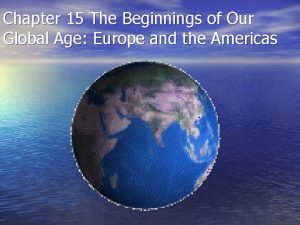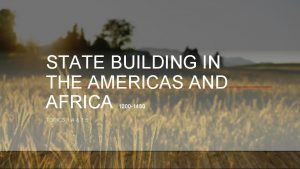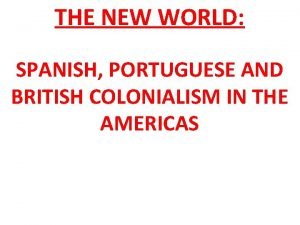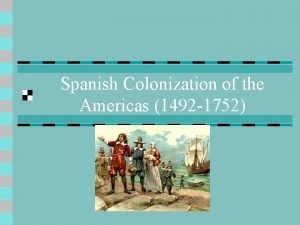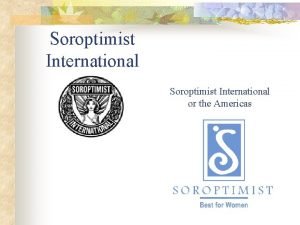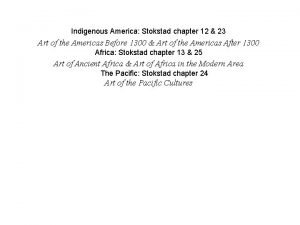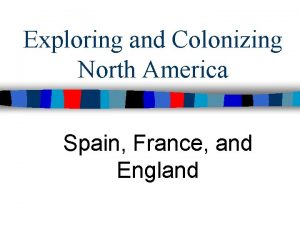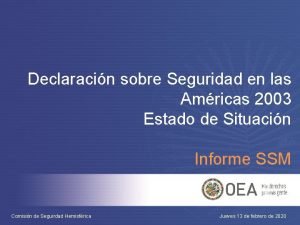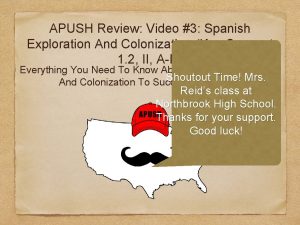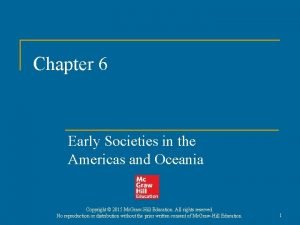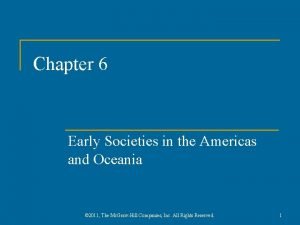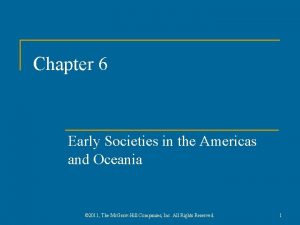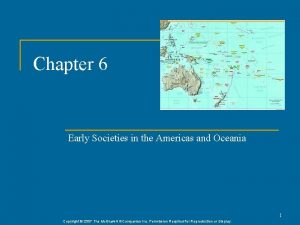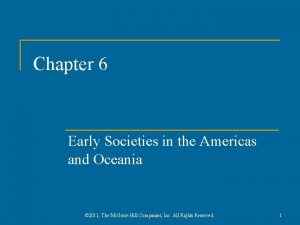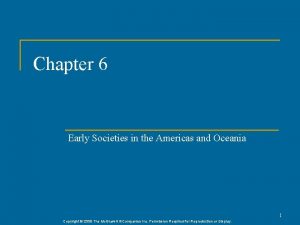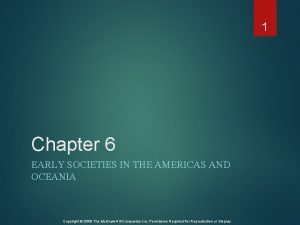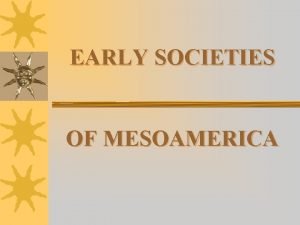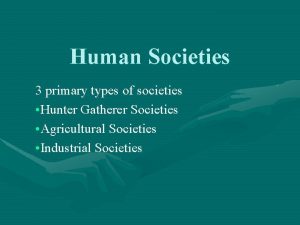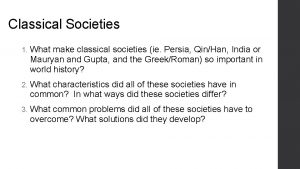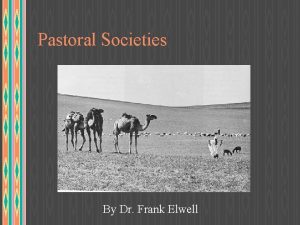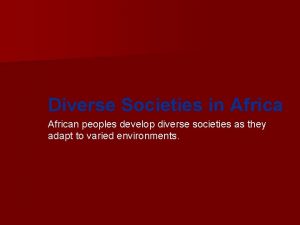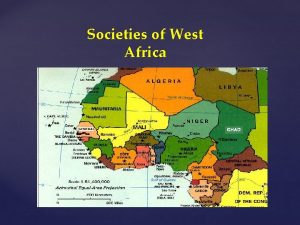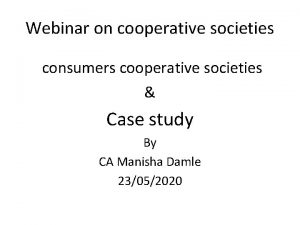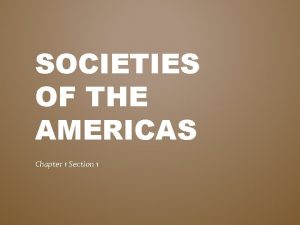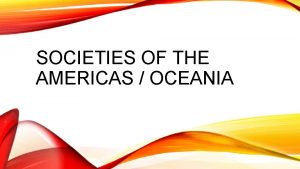Chapter 6 Early Societies in the Americas and
























- Slides: 24

Chapter 6 Early Societies in the Americas and Oceania © 2011, The Mc. Graw-Hill Companies, Inc. All Rights Reserved. 1

Bell Ringer • How do historians gather information or understand cultures with no written language? • Objective: Analyze how civilization was created in North America • Agenda: • Bell Ringer • Short Story • Ppt Lecture • Story of Mankind © 2011, The Mc. Graw-Hill Companies, Inc. All Rights Reserved. 2

Early Mesoamerican Societies, 1200 B. C. E. -1100 C. E. © 2011, The Mc. Graw-Hill Companies, Inc. All Rights Reserved. 3

Mesoamerica • Meso = means middle • refers to any cultures that lived in presentday Mexico & Central America

Origins of Mesoamerican Societies • Migration across Bering land bridge? • Probably 13, 000 B. C. E. , perhaps earlier • By sea from Asia? • By 9500 B. C. E. reached southernmost part of South America • Hunter/gatherer societies • Evolve into agricultural societies © 2011, The Mc. Graw-Hill Companies, Inc. All Rights Reserved. 5

© 2011, The Mc. Graw-Hill Companies, Inc. All Rights Reserved. 6

Olmec Civilization • Olmec = known for gigantic stone heads carved from basalt (volcanic rock) Some more than 9 feet tall Some weighed as much as 40 tons Heads of rulers Built without wheels or “beasts of burden” Olmec moved these heads about 60 miles from the mountains to the sites where they were found • Think about the giant head from Legends of the Hidden Temple! His name was Olmec! • •


Olmecs • 1200 -100 B. C. E. • The “rubber people” • Ceremonial centers • San Lorenzo, La Venta, Tres Zapotes • Olmec heads • Up to 10 ft. tall, 20 tons • Transported by dragging, rolling on logs • 1000 workers per head © 2011, The Mc. Graw-Hill Companies, Inc. All Rights Reserved. 9

Agriculture and Herding • Staple: maize • Herding: turkeys, barkless dogs • Both food • No draft animals • No development of wheeled vehicles © 2011, The Mc. Graw-Hill Companies, Inc. All Rights Reserved. 10

Olmec Society • Probably authoritarian in nature • Large class of conscripted laborers to construct ceremonial sites • Also tombs for rulers, temples, pyramids, drainage systems © 2011, The Mc. Graw-Hill Companies, Inc. All Rights Reserved. 11

Mysterious Decline of Olmecs • Ceremonial centers destroyed • No evidence of warfare • Revolution? • Civil war? © 2011, The Mc. Graw-Hill Companies, Inc. All Rights Reserved. 12

Maya • Huge cities discovered in nineteenth century • 300 B. C. E. -900 C. E. • Terrace farming • Maize • Cotton • Cacao beans • Chocolate • Currency • Major ceremonial center at Tikal © 2011, The Mc. Graw-Hill Companies, Inc. All Rights Reserved. 13

Maya Warfare • Warfare for purposes of capturing enemy soldiers • Ritual sacrifice of enemies • Enslavement • Small kingdoms engage in constant conflict until Chichén Itzá begins to absorb captives • Some nevertheless choose death • Center of empire develops © 2011, The Mc. Graw-Hill Companies, Inc. All Rights Reserved. 14

Maya Ritual Calendar • Complex math • Invention of “zero” • Calendar of 365. 242 days (17 seconds off) • Solar calendar of 365 days • Ritual calendar of 260 days • Management of calendar lends authority to priesthood • Timing of auspicious moments for agriculture © 2011, The Mc. Graw-Hill Companies, Inc. All Rights Reserved. 15

Maya Language and Religion • Ideographs and a syllable alphabet • Most writings destroyed by Spanish conquerors • Deciphering work began in 1960 s • Popol Vuh: Maya creation myth • Agricultural cycle maintained in exchange for honors and sacrifices • Bloodletting rituals • Human sacrifices follow after removal of fingers, piercing to allow blood flow © 2011, The Mc. Graw-Hill Companies, Inc. All Rights Reserved. 16

City of Teotihuacan • Highlands of Mexico • Lakes in area of high elevation • Village of Teotihuacan, 500 B. C. E. , expands to large agricultural city • Important ceremonial center • Extensive trade network, influenced surrounding areas • Begins to decline ca. 650 C. E. , sacked in middle of eighth century, burned city © 2011, The Mc. Graw-Hill Companies, Inc. All Rights Reserved. 17

Andean Societies • Migration into South America ca. 12, 000 B. C. E. • Climate improves ca. 8000 B. C. E. • Largely independent from Mesoamerica • Highly individualized due to geography © 2011, The Mc. Graw-Hill Companies, Inc. All Rights Reserved. 18

Chavín Cult • New religion in central Andes, 900 -300 B. C. E. • Little known about particulars of religion • Intricate stone carvings • Cult may have arisen when maize became an important crop • During this era Andean society became increasingly complex © 2011, The Mc. Graw-Hill Companies, Inc. All Rights Reserved. 19

The Mochica State • Valley of the Moche River • Dominated northern Peru, 300 -700 C. E. • Painting survives • One of many states in region, none able to consolidate into empire © 2011, The Mc. Graw-Hill Companies, Inc. All Rights Reserved. 20

Early Societies of Oceania, 1500 B. C. E. 700 C. E. © 2011, The Mc. Graw-Hill Companies, Inc. All Rights Reserved. 21

Oceania • Prehistoric land bridges, lower seas permit migration • Outrigger canoes for open-sea travel • Early hunter-gatherer societies in Australia • Early agriculture in New Guinea © 2011, The Mc. Graw-Hill Companies, Inc. All Rights Reserved. 22

Aborigine of the Naomi Tribe © 2011, The Mc. Graw-Hill Companies, Inc. All Rights Reserved. 23

Lapita Peoples • Found throughout Pacific islands • Agriculture, animal herding • Political organization based on chiefdoms • Trade over open ocean declines 500 B. C. E. • Greater independence of settlements © 2011, The Mc. Graw-Hill Companies, Inc. All Rights Reserved. 24
 The early complex societies 3500 to 500 b.c.e
The early complex societies 3500 to 500 b.c.e Chapter 24 the americas and oceania
Chapter 24 the americas and oceania Chapter 24 new worlds the americas and oceania
Chapter 24 new worlds the americas and oceania Chapter 24 new worlds the americas and oceania
Chapter 24 new worlds the americas and oceania Ap world history chapter 20 the americas and oceania
Ap world history chapter 20 the americas and oceania Chapter 16 people and empires in the americas
Chapter 16 people and empires in the americas Early cpr and early defibrillation can: *
Early cpr and early defibrillation can: * Chapter 10 global cuisine 1 the americas
Chapter 10 global cuisine 1 the americas Chapter 2 exploring the americas study guide
Chapter 2 exploring the americas study guide Chapter 2 exploring the americas answers
Chapter 2 exploring the americas answers Mali spice chart
Mali spice chart Chapter 15 societies and empires of africa
Chapter 15 societies and empires of africa Chapter 31 societies at crossroads
Chapter 31 societies at crossroads The beginnings of our global age europe and the americas
The beginnings of our global age europe and the americas The beginnings of our global age europe and the americas
The beginnings of our global age europe and the americas Carpa nan
Carpa nan Spanish caste system in the americas
Spanish caste system in the americas Spanish colonization of the americas
Spanish colonization of the americas Soroptimist international of the americas
Soroptimist international of the americas Art of the americas before 1300
Art of the americas before 1300 Ib history of the americas study guide
Ib history of the americas study guide European colonization of americas
European colonization of americas Declaración sobre seguridad en las américas 2003
Declaración sobre seguridad en las américas 2003 Spanish cast system
Spanish cast system Americas guardians mc
Americas guardians mc
